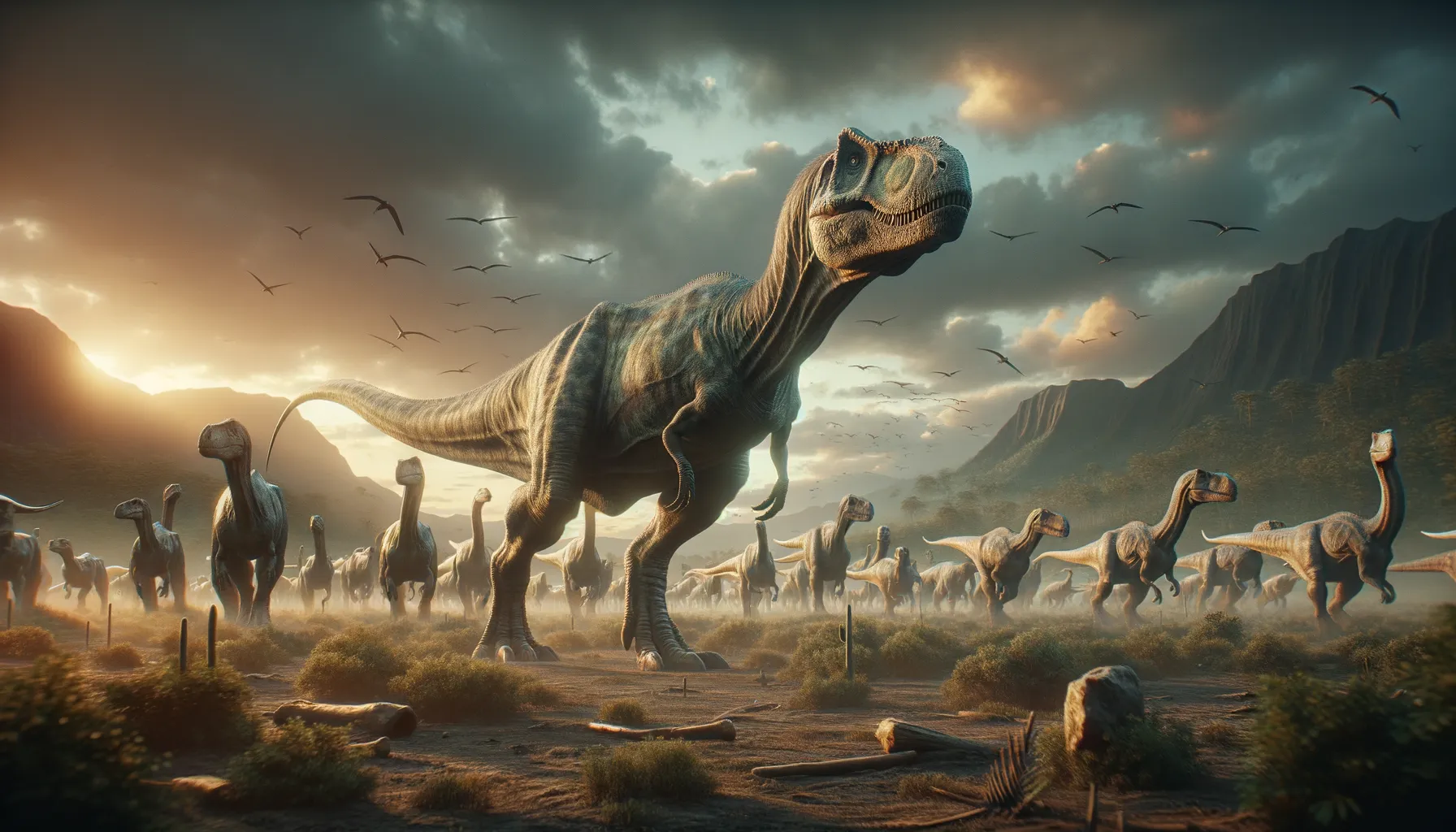
Camarasaurus
Gentle giant of the Jurassic era.
Period
Jurassic
Length
Grew up to 60 feet long from head to tail.
Height
Stood about 15 feet tall at the shoulder.
Weight
Weighed up to 20 metric tons.
Camarasaurus was a large, herbivorous dinosaur that roamed the earth during the Late Jurassic period. Recognizable by its sturdy body and long neck, it was one of the more common sauropods of its time. Its fossils have provided significant insights into dinosaur herd behavior and skeletal structure, contributing greatly to our understanding of the era's ecosystems.
Diet
Camarasaurus was a herbivore, feeding on a diet rich in plants, including conifers and cycads. Its peg-like teeth were well-suited to pulling leaves and branches from trees.
Hunting
As a herbivore, Camarasaurus did not hunt but instead relied on browsing foliage high above the ground that other smaller herbivores could not reach.
Environmental challenges
Camarasaurus faced several environmental challenges, including the need to find sufficient food sources to sustain its massive body. Climate changes during the Jurassic could affect the abundance of plant life, further challenging its survival. Predation from large theropods like Allosaurus posed a constant threat, especially to the young and weaker individuals.
Speed
Camarasaurus was relatively slow due to its massive size.
Lifespan
Estimated to be around 50 to 75 years.
First discovery
First discovered in Colorado, USA, in 1877.
Fun Facts
- Camarasaurus was one of the most common dinosaurs found in North America during the late Jurassic period.
- The name 'Camarasaurus' means 'chambered lizard,' referring to the hollow chambers in its vertebrae.
- Despite its massive size, Camarasaurus had relatively short legs compared to other long-necked dinosaurs.
- Camarasaurus had a distinctive arched snout and large, spoon-shaped teeth ideal for munching on tough plant material.
- Its neck was shorter and more robust than that of its relatives, like the Brachiosaurus, making it well-suited for reaching food at medium height levels.
- The dinosaur's fossils were some of the first complete sauropod skeletons ever discovered, offering significant insights into sauropod anatomy.
- Camarasaurus travel in herds, which might have helped them defend against predators like Allosaurus.
Growth and Development
Camarasaurus exhibited rapid growth rates in its early years, necessary to reach a size that provided protection against predators. Studies suggest that it laid eggs, and hatchlings grew quickly to improve their chances of survival. Growth might have slowed once it reached adulthood, focusing resources on maintaining its immense size.
Habitat
Camarasaurus inhabited lush floodplain environments with abundant vegetation, ideal for its herbivorous diet. These areas were characterized by rivers and streams that helped in the growth of diverse plant life. Its presence in these regions indicates it could adapt to various environmental conditions throughout its range.
Interaction with other species
Living alongside other dinosaur species, Camarasaurus likely shared its habitat with both herbivores and predators. Its size and possible herd living provided protection against predators, while its feeding habits did not directly compete with smaller herbivores. Camarasaurus' presence could influence the structure and dynamics of its ecosystem.
Natural lifespan
It had a natural lifespan of about seven decades under ideal conditions.
Reproduction
Camarasaurus reproduced through egg-laying, likely in nests that were carefully covered for protection. The number of eggs laid per clutch is uncertain, but parental care might have involved guarding these nests from predators.
Social behaviour
Evidence suggests Camarasaurus lived in herds, a behavior that provided safety in numbers against predators. This social structure might have also facilitated finding food in their vast habitats by allowing them to work collaboratively.
Fossil locations
Camarasaurus fossils have been predominantly found in the Morrison Formation of the western United States, especially in Colorado, Wyoming, and Utah. These discoveries have been crucial in piecing together its anatomy and behaviors. The abundance of its fossils makes it one of the best-preserved sauropods from the Jurassic period.
